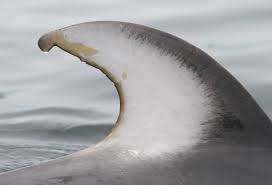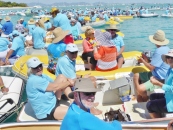The coastlines and waterways of the Gold Coast and Southeast Queensland have offered resources that the Aboriginal peoples have been using in various ways. Professor Mike Rowland shares his research on how they have gathered and used coastal resources – even up to the present day.
Aboriginal people have occupied Australia for at least 50 000 years. During that time, they used the vast range of resources along Australia’s coastlines, estuaries, rivers and lakes. Use of these environments was interwoven with all aspects of social, cultural, spiritual and economic life.
Coastal resources continue to be important to contemporary Aboriginal and Torres Strait Islander communities. Cultural responsibilities and rights to harvest remain an integral part of ongoing connection to country and culture. Many Quandamooka people living on North Stradbroke Island continue to rely on marine resources. Mullet is one of the most important fish caught but also tailor, whiting, flathead, bream and trevally. Eugaries (pipis), oyster, whelks, pearl oyster and mussels are also gathered.
A brief history
At 50 000 years ago the coast lay further east and what is now the coastline would have been extensive plains, forests, scrublands, coastal fringes and mangrove forest. Most evidence of human habitation on this coastal plain has been submerged by a rise in sea level at the end of the last Ice Age. As the sea rose, people retreated to the current coastline which only reached its current position around 6 500 years ago.
A site at Wallen Wallen Creek on North Stradbroke Island spans the transition from pre-coastal (terrestrial) to coastal (marine) environments. The site was first occupied over 20 000 years ago when it was 40 km inland. People initially focused on terrestrial resources but shifted their focus in the last 2000 years to coastal resources including fish and shellfish. Another site at Hope Island, contained abundant shell remains dominated by oyster, at over 4 000 years ago.
Fishing methods
Many different fishing methods were used. These included multi-pronged spears, a range of nets, stone fish traps and brush weirs. Further north and to the south people used fish hooks. Poisons were used to stun fish in pools or traps where they could be easily caught. For example, the tape vine (Stephania japonica), called nyannum was used as a fish poison throughout the territory of the Yugambeh people of the Gold Coast.
Fish hooks were made from shell and bone and fishing lines were made from a variety of fibres. Bark and dugout canoes were used in turtle and dugong hunting.
Hand nets were knotted from bush string and either suspended from an oval frame or attached to a pair of long sticks which are brought together, closing the net like a scoop. These are known as tow-row
Stone fish traps with multiple pens are common on the Torres Strait islands and at limited locations in the southern Gulf of Carpentaria. Further south along the Queensland coast, traps and weirs are less frequent and are often only a single pen. However, a complex of traps at Scraggy Point on Hinchinbrook Island covers an area of 20 000m2. Trap complexes are also present at Booral in Hervey Bay, Toorbul Point, near Bribie Island and at Tallebudgera Creek. Trap walls are most often in the shape of an arc and are found at points and estuaries. Traps and weirs of inland Queensland were often made of organic materials.
Traps in the intertidal zone take advantage of fluctuating water levels. The walls of the trap must be low enough for fish to swim in at high tide, but high enough that some are captured at low tide. Nets or cages were placed at gaps in the walls of traps to capture fish. Other by-products were crabs obtained from the crevices within and underneath the rock walls, oysters from on the rocks themselves, and a range of species of shellfish from the muddy and sandy substrates of the traps. Fish in the traps were speared or captured by hand.
In southern Queensland, traps and weirs made of organic materials appear to have been common in the early days of settlement. Matthew Flinders observed a number of organic fish traps near Clontarf Point and they were also observed at North Pine River. Thomas Petrie described the capture of freshwater eels in the southeast.
The resources of the coast, sea, estuaries and islands provided not only food, but also materials for shelter, clothing, tools and weapons, as well as objects for ceremonial use.
The dreaming story of Gowonda
Southport is said to be associated with the legend of Gowonda, a hero of the Yugambeh people. Gowonda was a great hunter, with a splendid physique and white hair. Eventually he left the people and turned into a dolphin, recognisable by his white fin. Now he teaches the other dolphins to drive the fish into the beach, so that his people can catch them in nets. Among every shoal of dolphin is a leader with a white fin which Aboriginal people believe to be a descendant of Gowonda.
PHOTO CREDIT: Booral fish trap courtesy of Mike Rowland
Sources of information on the Aboriginal history of the Gold Coast include: Rory O’Connor 1997 The Kombumerri. Aboriginal People of the Gold Coast and the Yugambeh Museum at http://www.yugambeh.com/
Mike Rowland is an archaeologist who has worked in New Zealand, Fiji and Australia and is currently an Adjunct Associate Professor, James Cook University, Cairns.




























